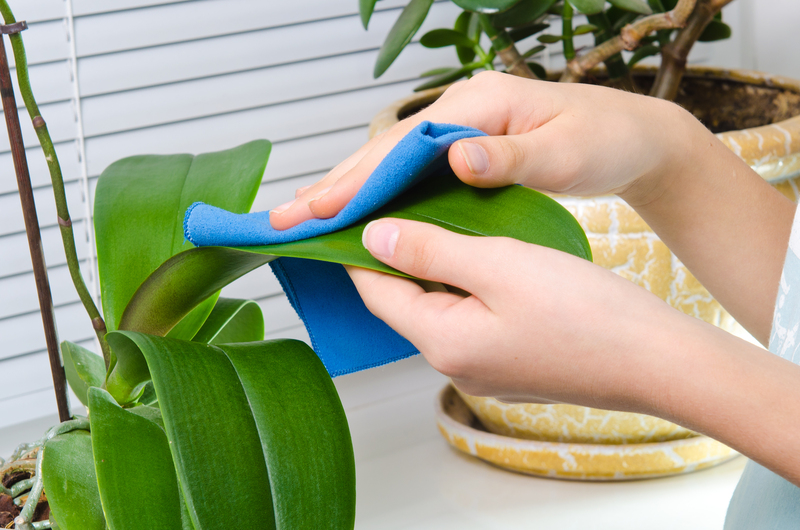Air Quality Matters: Elevating Home and Work Environments
Posted on 01/06/2025
Air Quality Matters: Elevating Home and Work Environments
In today's fast-paced world, air quality is often overlooked. Yet, it is one of the most crucial elements for maintaining a healthy lifestyle - especially in enclosed spaces like our homes and workplaces. Understanding why air quality matters and how to improve it can make a tremendous difference in our overall well-being. This article will thoroughly explore the importance of air quality in home and work environments, practical steps for improvement, and the latest technological advancements in indoor air purification.
Why Air Quality is Crucial in Home and Work Environments
Air quality directly affects our health, comfort, and productivity. When we speak about indoor air quality (IAQ), we're referring to the condition of the air we breathe inside buildings. Poor IAQ can lead to a myriad of health complications, ranging from mild irritations to severe respiratory diseases.
- Homes: Most people spend a substantial amount of time indoors. Contaminated indoor air can expose families to pollutants and allergens, compounding issues for children, the elderly, and those with weakened immune systems.
- Workspaces: Given the average adult spends around 8 hours each day at work, subpar air can hamper productivity, increase sick days, and negatively impact mental clarity.
The Health Implications of Poor Air Quality
- Respiratory Disorders: Allergies, asthma, and other respiratory ailments are exacerbated by dust, mold spores, and volatile organic compounds (VOCs).
- Cardiovascular Effects: Fine particles in polluted air can penetrate deep into the lungs and reach the bloodstream, posing risks to heart health.
- Mental Performance: Poor indoor air may lead to headaches, fatigue, and difficulty concentrating.
- Long-Term Diseases: Chronic exposure to pollutants can contribute to chronic obstructive pulmonary disease (COPD), lung cancer, and other serious conditions.
Improving air quality at home and work is paramount. Employers and homeowners alike have a responsibility to provide clean, healthy air for all occupants.

Common Indoor Air Pollutants
Indoor air pollution can come from several sources. Understanding these helps in effectively combating poor air quality indoors.
- Mold and Mildew: Accumulates in damp areas like bathrooms and basements, releasing spores into the air.
- Dust and Dust Mites: Common in carpets, upholstery, and bedding, causing allergic reactions.
- Pet Dander: Tiny, even for non-allergic pets, their fur can carry allergens.
- Volatile Organic Compounds (VOCs): Emitted from paint, varnishes, and cleaning products, these can be highly toxic.
- Carbon Monoxide: Produced by malfunctioning heaters and appliances, posing a severe health hazard.
- Particulate Matter (PM2.5 and PM10): Fine particles from outdoor pollution, cooking, or combustion that can be inhaled deeply into the lungs.
- Radon: A naturally occurring radioactive gas, particularly an issue in some geographical regions.
The Benefits of Good Indoor Air Quality
Clean air elevates home and office environments in multiple ways:
- Better Health: Reduces the risk of respiratory illnesses, headaches, and eye irritation.
- Enhanced Productivity: Studies show employees work more efficiently and take fewer sick days in clean air environments.
- Improved Sleep: Fresh, purified air can improve sleep quality at home.
- Odor Control: Proper air management keeps unpleasant odors at bay.
- Protects Furniture and Electronics: Reduced dust and contaminant buildup means longer-lasting assets at both home and work.
Scientific Evidence
According to the World Health Organization, poor air quality accounts for over 4 million premature deaths annually. Furthermore, the U.S. Environmental Protection Agency (EPA) has consistently ranked indoor air pollution among the top five environmental risks to public health. A small investment in air purification pays huge dividends in health and well-being.
How To Check and Monitor Air Quality at Home and Work
Being proactive is the key to maintaining safe air quality in buildings. There are several methods to check and monitor the air quality in your indoor settings.
Visual and Olfactory Cues
- Musty smells can indicate mold growth.
- Visible dust accumulation points to poor filtration.
- Excess humidity often leads to mildew and allergies.
Digital Air Quality Monitors
- Standalone Monitors: Devices available online or in electronics stores can measure PM2.5, VOCs, carbon dioxide, temperature, and humidity.
- Smart Sensors: Advanced models send alerts to your phone, integrate with smart home systems, and log historical data.
Professional Testing
- Specialized companies use advanced equipment to detect radon, carbon monoxide, and other less obvious pollutants. This is particularly recommended for older buildings, new renovations, or homes with a history of water damage.
Practical Steps to Improve Air Quality at Home and Work
Taking steps to improve indoor air quality need not be a costly or complex process. Here are proven strategies:
1. Increase Ventilation
- Regularly open windows and doors to let in fresh air.
- Use exhaust fans in kitchens and bathrooms to remove excess moisture and pollution.
- Where possible, use mechanical ventilation systems to maintain consistent airflow, especially in large workplaces.
2. Control Humidity Levels
- Use dehumidifiers in damp spaces to prevent mold and mildew growth.
- Monitor humidity with hygrometers; keep levels between 30% and 50%.
3. Eliminate Sources of Pollution
- Choose low-VOC paints, clean with non-toxic agents, and store chemicals safely.
- Ban indoor smoking and avoid burning candles or incense excessively.
- Repair leaks and clean up water damage promptly to avoid mold.
4. Clean Regularly and Thoroughly
- Vacuum using HEPA filters to capture fine dust and allergens.
- Wash bedding, curtains, and rugs frequently to control pet dander and dust mites.
- Wipe down surfaces - especially in shared office spaces - with damp cloths.
5. Use Air Purifiers
- Choose HEPA air purifiers to remove particulates and some VOCs.
- Consider purifiers with activated carbon filters to tackle odors and chemical gases.
- For workplaces, industrial-grade air filtration can be deployed in large, open-plan offices or factories.
6. Add Indoor Plants
- Certain plants like spider plants, peace lilies, and snake plants naturally filter toxins.
- Plants can boost productivity, reduce stress, and increase humidity in dry environments.
Latest Technological Innovations in Air Quality Improvement
Technology has revolutionized how we manage and improve air quality indoors. From smart sensors to advanced filtration systems, here are some of the most impactful innovations:
- Smart Air Quality Devices: Wi-Fi-enabled monitors can detect pollutants in real-time, connect to HVAC systems, and automatically adjust settings.
- Photocatalytic Oxidation (PCO): Advanced filtration using UV light to break down bacteria, viruses, and VOCs.
- Bipolar Ionization: This technology releases ions that neutralize airborne contaminants, reducing pathogens and allergens.
- Automated HVAC Controls: Integration of air quality sensors with ventilation systems for constant, optimized air movement and filtration in commercial buildings.
- Wearable Air Quality Trackers: Personal devices designed to alert users when air quality drops, ideal for individuals with allergies or asthma.

Air Quality Standards and Guidelines
Various organizations have released guidelines to help maintain safe air indoors:
- World Health Organization (WHO): Recommends maximum levels for particulate matter, NO?, CO, and formaldehyde in indoor environments.
- U.S. Environmental Protection Agency (EPA): Provides resources and air quality indices to guide residential and workplace air safety standards.
- Occupational Safety and Health Administration (OSHA): Sets permissible exposure limits in work environments for hazardous substances and air contaminants.
Following these standards, and keeping up with recommended guidelines, ensures that your workplace air quality and home air quality remain at optimal and safe levels.
Conclusion: Elevate Your Spaces by Prioritizing Air Quality
In summary, air quality truly matters in both home and work environments. Clean, healthy air leads to healthier families, more productive employees, and an overall improved quality of life. It is an investment that pays off in countless ways.
By staying informed about indoor air pollutants, regularly monitoring the air in your spaces, implementing practical improvements, and embracing technological advances, you can significantly improve the air quality in your home and workplace. Don't underestimate the importance of breathing clean air--your body, mind, and those around you will thank you for it.
Take a proactive step today to elevate the air quality in your indoor environments. Because when it comes to the air we breathe, quality is everything.





